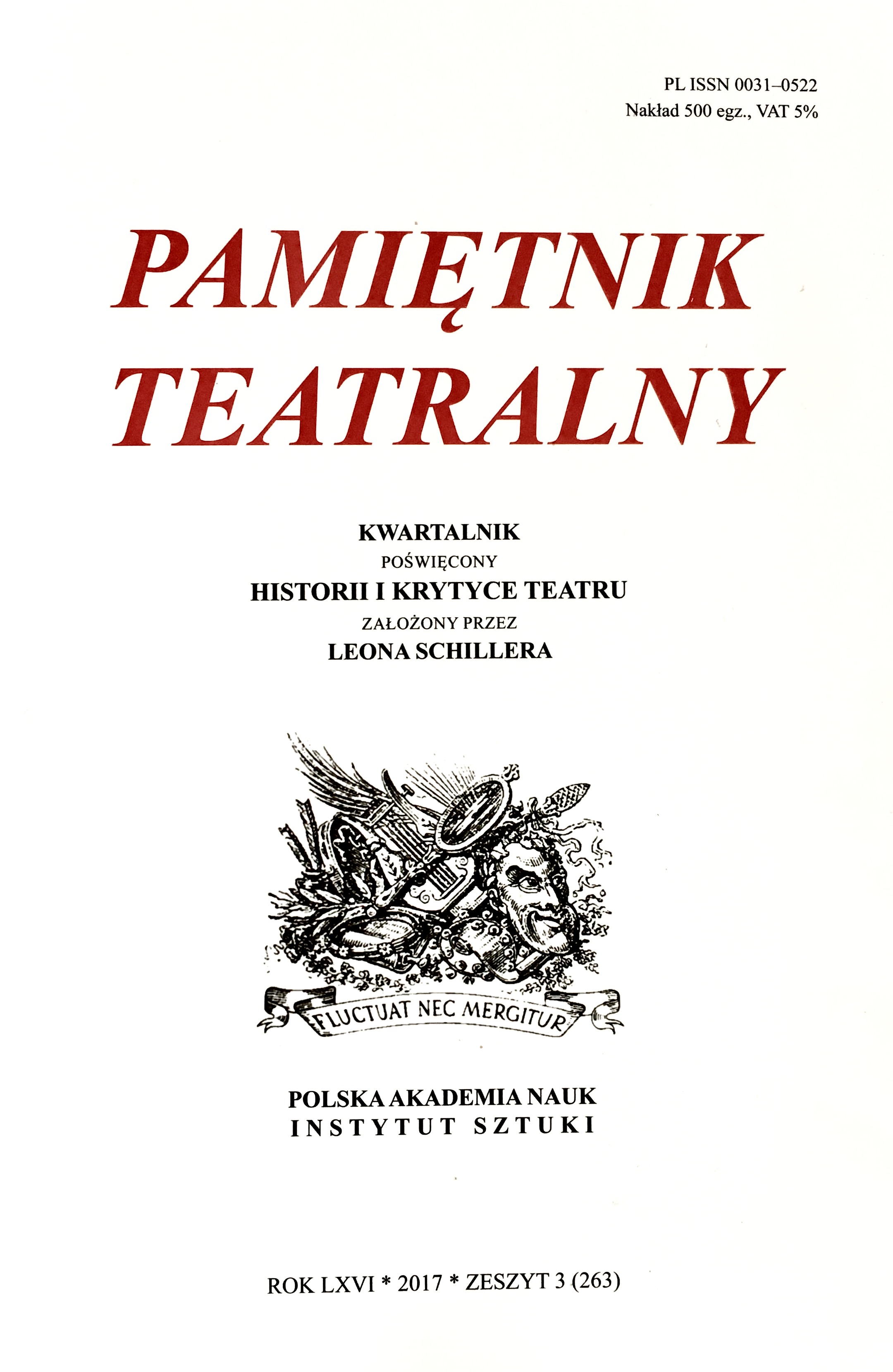„Melpomeny podrzucone dziecię” oraz „grand monstre”.
“Melpomene’s Abandoned Babe” or “a Grand Monstre”
A Comparison of the Dramatic Architectures of "Herminia, czyli Amazonki" and "Izkahar, Król Guaxary" by Wojciech Bogusławski
Author(s): Daniel StachułaSubject(s): Theatre, Dance, Performing Arts
Published by: Instytut Sztuki Polskiej Akademii Nauk
Keywords: polish 18th-century theatre; Wojciech Bogusławski; early modern drama;
Summary/Abstract: The text approaches the problems of music-dramatic work of Wojciech Bogusławski in a new way by examining it from the standpoint of opera studies. The article analyses relations between opera libretto and melodrama in the work of the father of the Polish theatre. By taking Albert Gier’s thesis about the paradigmatic shape of the opera libretto and the so-called open drama as its starting point, the article applies the method of hypothesis cross-validation to emphasise blurriness of generic boundaries of the two dramatic forms. New light is shed on the libretto of Herminia, czyli amazonki [Herminia, or the Amazons] as it is considered from the point of view of melodrama poetics, whereas Izkahar, król Guaxary [Izkahar, the King of Guaxara] is examined from the perspective of libretto studies. The results of the study thus conducted indicate strong similarities between the two dramatic forms at the level of structure and ideas (musicality of both dramatic forms, the mosaic-like quality of the space and time, tableaux vivant, strongly hyperbolised emotional states, high affectation, lieto fine, the use of an epic prototype, a preference for composing group scenes and deploying crowds on the stage) as well as at the philosophical and anthropological level (the collapse of the classical paradigm, the “Biedermeier tragedy” quality, negation of the internal/external opposition, the problematics of theodicy).
Journal: Pamiętnik Teatralny
- Issue Year: 263/2017
- Issue No: 3
- Page Range: 16-42
- Page Count: 37
- Language: Polish

